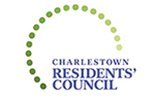Last Updated on October 9, 2025
Higher Property Values – People find trees to be pleasing, and they are drawn to homes and businesses with trees on the property. The organization Earthshare has found that property values are 7 to 25 percent higher for houses surrounded by trees, and consumers spend up to 13 percent more at shops near green landscapes. Trees increase in value as they grow larger; thus, they are a good property investment. Many Charlestown residents state that they were attracted to invest in retirement here in part because of the trees on the campus.
Better Mental Health – Multiple studies have found that access to nature, including a walk in the woods, produces better cognitive functioning and greater overall mental health. One study found that hospital patients who can see trees out their windows are hospitalized 8 percent fewer days than their counterparts. Trees can be planted as living memorials, as has been done in Charlestown’s Memory Walk and also on the east side of Lake Charles.
Weather Moderation – Trees have a profound local and regional moderating effect on both temperatures and wind. The annual mean air temperature of a city the size of Baltimore can be 1.5 to 5.5 degrees F. higher than surrounding areas due to the “heat island effect”. This greater warmth is moderated in direct proportion to the tree coverage in the city. Additionally, when trees are leafed out, they reduce the impact of winds and storms.
Jobs – In just the U.S. Forest Service alone, recreation visitor spending in the National Forests amounted to nearly $11 billion in 2012. That economic activity sustained about 190,000 full and part-time jobs. When you add in the jobs which forests provide in paper products, timber production and use, fruit production, landscaping, etc., the impact of trees is tremendous.
Flood Control – Trees help to hold vast amounts of water which would otherwise surge downhill, causing erosion and carrying sediment to cities and the Bay. Therefore, forests are an important part of stormwater management. This is a major reason for local reforestation projects, of which Charlestown is a part.
Clean Water – Forests help provide a natural filtration system for two-thirds of the water supply in the United States. This filtration reduces the amount of further treatment required for safe drinking water. Similarly, our forests filter the water which eventually enters the Chesapeake Bay. This is another major purpose of our local reforestation projects.
Clean Air – Trees filter particulates and absorb numerous pollutants. A study in the Journal of Preventive Medicine found that people experienced more deaths from respiratory disease and heart disease in areas where trees had been eliminated. Trees often are referred to as “the lungs of the world” because of the oxygen they provide to other living things.
Wildlife Habitat – Wildlife use trees for shelter, food, and nesting. The biodiversity of trees in forests produces proportional biodiversity in their animal inhabitants. The biodiversity at Charlestown can be seen in the large number of species listed in Appendices 2, 3, and 4. Biodiversity is important, for it not only makes forests more interesting, but also increases the natural productivity and stability of the ecosystem.
Carbon Sequestration – The burning of fossil fuels and wood releases heat-trapping carbon dioxide into the atmosphere, helping to produce global warming and other negative aspects of climate change. The planting of trees can assist in countering this process. A tree can absorb up to 48 pounds of carbon dioxide per year, and can sequester (incorporate) up to one ton of carbon by the time it is 40 years old.
Reduced Crime – Studies have shown that neighborhoods with abundant trees have fewer crimes than those without many trees. Researchers think that this finding is because green spaces have a calming effect, and they encourage people to spend more time outdoors (or enjoying Charlestown’s elevated walkways through the trees).
Architectural/Engineering Enhancement – Trees can provide privacy, enhance vistas (like Lake Charles), or screen out less desirable views (like parking lots, roofs, and machinery). Trees can reduce glare and reflections, and they can break the monotony of areas like parking lots. Trees also provide landscaping and architectural background, as seen in the buildings on the Charlestown campus.
